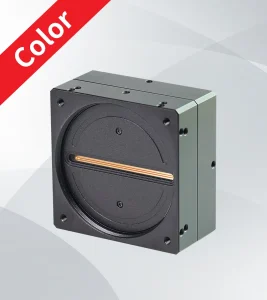Machine Vision in Industry — Cameras and sensors used to replace the human eye, brain&intelligence Industrial Machine vision: It is related to industrial manufacturing and factory automation. It enables machines to “visualize” and interpret the manufacturing environment, making both production as well as related analytics faster, more reliable. A common system includes high-resolution cameras to capture images or videos which are processed by powerful algorithms that can be used inspect parts for defects, take dimensional measurements or guide robots.
The resolution and frame rates of the cameras are two key factors that determine their performance. This could include an industrial machine vision camera with 12 megapixels and 60 frames per second that can find minute flaws on a production line running at100 meters/minute. This level of accuracy helps early on defect detection which in turn reduces wastage and improves product quality.
For instance, in automotive manufacturing machine vision is used to inspect parts for defects such as cracks or misalignments and that the part has been put together correctly. In one application, a camera inspects every weld on an auto frame to meet strict safety requirements. But manual checks take much longer and are less reliable, so until now you could only use this for full site inspection.
These systems are also employed in robot guidance, a practice that helps robots complete more sophisticated tasks such as electronics assembly and product packaging. Vision-guided robots can analyze, sort and package 200 parts per minute with almost 100% accuracy in packaging plants too. This resulted into huge savings on human resources while increasing production quality due to massive efficiency improvements achieved by the robotic system implemented at this plant line.
Futurist Ray Kurzweil has noted that automation is changing the future of industry, with perhaps a bit more flair by stating, “Automation is driving the most transformative shift in manufacturing since industrial revolution.” In this shift, industrial machine vision has the biggest role to play that drives productivity and quality norms throughout different domains.

From a financial perspective, manufacturers can enjoy substantial ROI by saving costs in labor reduction as well as the misuse due to wastage and accelerated time of production. The first cost savings that generally springs to mind is labour, and although an industrial machine vision system can be expensive to both develop (costs range from $10-100k depending on complexity) in the long run most companies will save money just by having quality control independently monitored.
Machine vision camera are used in pharmaceuticals to check the correct labeling and packaging of medicines based on thousands units per hour. This guarantees compliance with regulations and reduces the chance of costly product recalls that result from labeling or packaging mistakes.
In Conclusion Industrial machine vision improves manufacturing with some significant characteristics such as, a higher degree of accuracy in analysis and detection speed and efficiency makes it one the best choice for almost all process at factories. It is indispensable for modern production systems in areas of quality control, robotic guidance and process automation.
